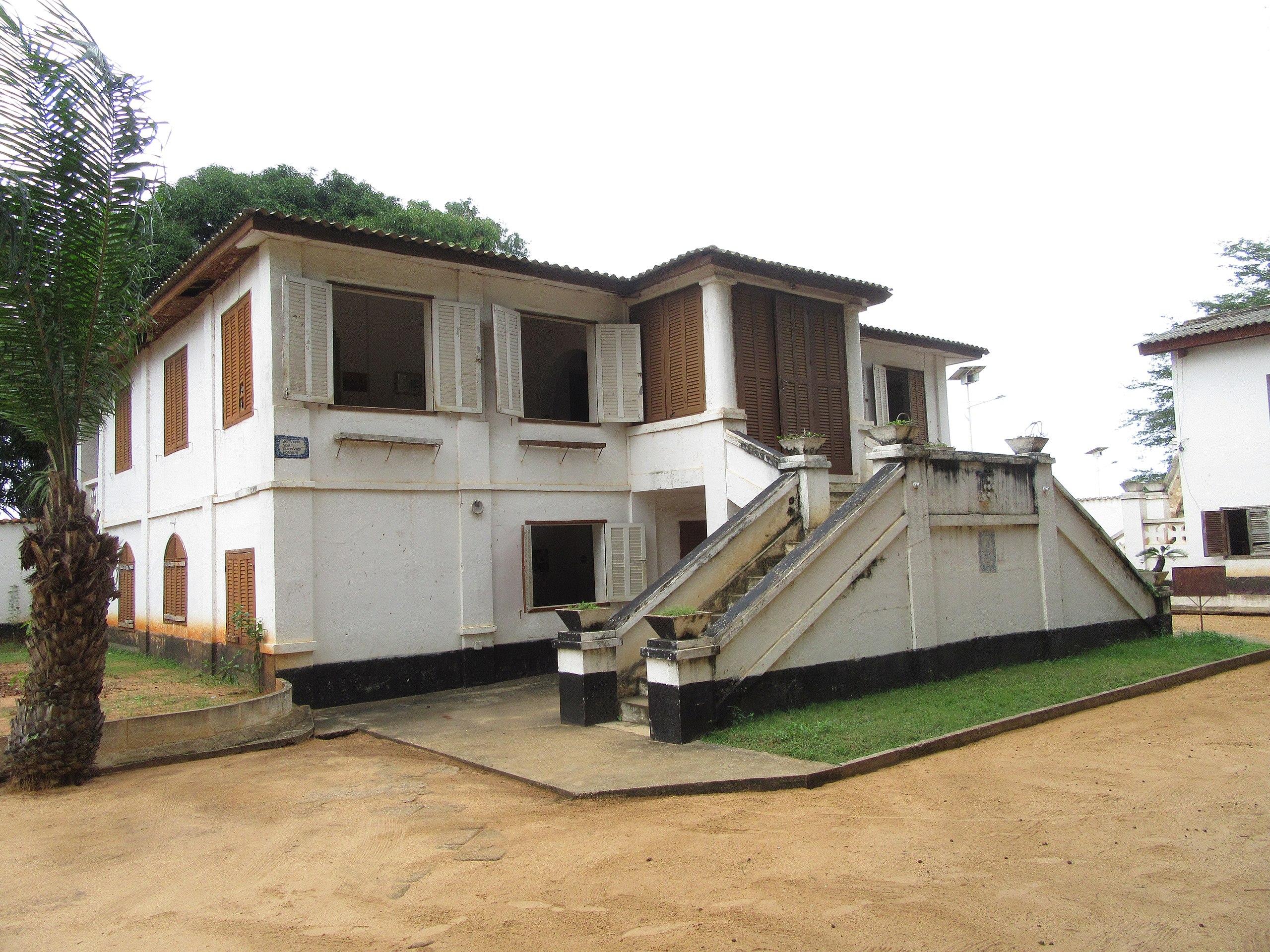Ouidah Museum of History vs Maison des Esclaves
The Significance of the Ouidah Museum of History and Maison des Esclaves in the History of the Slave Trade and Abolition
The Ouidah Museum of History and Maison des Esclaves serve as profound markers in understanding the complex and painful history of the Atlantic Slave Trade. These museums, housed within significant historical locations, offer visitors an opportunity to explore, understand and reflect on the impacts of this era.
Ouidah, a city in the Republic of Benin, was one of the most active slave trading ports in the entire West African region. Today, the Ouidah Museum of History stands as a testament to the past, providing a comprehensive narrative about the city’s involvement in the slave trade. Housed in an 18th-century fort, the museum chronicles the history of the Kingdom of Dahomey, the cultural practices of the time, the role of the region in the slave trade, and the eventual abolition of slavery.
On the other side of the Atlantic, in Senegal, stands the Maison des Esclaves. Located on Gorée Island, the ‘House of Slaves’ is one of the oldest houses on the island and symbolizes the final exit point of the slaves from Africa. Despite debates about the exact number of slaves that passed through this house, its symbolic significance remains undisputed.
These two museums don’t merely recount history; they facilitate a visceral connection to the past. As one walks through the ‘Door of No Return’ at Maison des Esclaves or follows the ‘Route des Esclaves’ in Ouidah, one can almost feel the weight of history, the palpable fear, and hopelessness of millions of Africans who were forcibly taken from their homeland.
Yet, these monuments also tell a story of resilience, resistance, and liberation. They trace the arduous journey towards the abolition of the slave trade and depict the relentless struggles of the enslaved Africans for freedom. The museums also highlight the contributions of prominent abolitionists and the role of revolts and rebellions in ending this horrific trade.
Educationally, the museums serve as essential resources for understanding the scale and impact of the slave trade. They encourage visitors to think critically about this historical period, fostering a deeper comprehension of the socio-economic and political dynamics that perpetuated the trade for centuries.
Finally, these museums serve as sites of memory and healing. They remind us of the indomitable human spirit that endured in the face of unimaginable hardship. As we confront the past in these spaces, we can begin to address the enduring impacts of the slave trade and work towards a more equitable future.

How Does the Ouidah Museum of History Present the History of the Slave Trade?
The Ouidah Museum of History provides a compelling account of the Atlantic slave trade, offering a detailed narrative that brings the past to life. The museum, located within the historical Fort of São João Baptista de Ajudá, operates as an essential resource for understanding the complex history of this brutal trade.
The narrative journey begins with the establishment of the Kingdom of Dahomey, an African empire known for its military prowess and economic power. The museum highlights the role of Dahomey in the slave trade, providing a sobering reminder that the trade was a multinational enterprise, with different African states playing pivotal roles.
The museum uses a variety of mediums to narrate the story of the slave trade. Exhibits include artifacts, sculptures, paintings, and photographs, offering a rich tapestry of visual representations. For instance, the depiction of the ‘Tree of Forgetfulness’, a site where enslaved people were made to circle around to forget their past before they were shipped off, offers a powerful symbol of the dehumanization involved in the slave trade.
One of the museum’s most poignant features is the ‘Route des Esclaves’ or ‘Slave Route’, a 4 km path that leads to the ‘Point of No Return’, the final departure point for millions of enslaved Africans. This chilling monument confronts visitors with the horrific realities of the trade, as they tread the same path that countless Africans were forced to walk before being shipped off to foreign lands.
However, the narrative does not end with despair. The museum presents the resilience and resistance of the enslaved people, highlighting stories of rebellion and the eventual fight for abolition. It also sheds light on the African diaspora, emphasizing the cultural influence African people exerted in the Americas despite the brutal circumstances of their arrival.
By presenting a balanced and comprehensive narrative, the Ouidah Museum of History helps visitors gain a deep understanding of the Atlantic slave trade and its far-reaching impacts, promoting thoughtful reflection and dialogue about this painful chapter of human history.
For further exploration of African history and culture, consider visiting the National Museum of Mali, another landmark institution that offers rich insights into the continent’s past.
What Distinguishes the Exhibits at Maison des Esclaves?
Located on Gorée Island, Senegal, the Maison des Esclaves (House of Slaves) stands as a poignant reminder of the horrors of the Atlantic slave trade. Despite controversies surrounding the exact number of slaves transported through this house, its symbolic representation of the brutal trade remains deeply moving.
One of the defining features of Maison des Esclaves is its architecture. The house is a two-story building, with the lower level consisting of cramped, windowless cells where slaves were held before being transported to the New World. The upper level, in stark contrast, includes the quarters of the slave traders, featuring large, airy rooms and balconies with views of the Atlantic Ocean. This stark dichotomy between the living conditions of the enslaved and the slave traders serves as a powerful visual representation of the inhumane nature of the trade.
Another standout exhibit is the ‘Door of No Return’. This small, ominous doorway, leading directly out to the sea, is said to have been the last piece of African soil the slaves would touch before being shipped off. This door, opening out to the vast, uncertain Atlantic Ocean, symbolizes the despair and finality of the enslaved Africans’ plight.
Furthermore, Maison des Esclaves hosts a series of panels and exhibits that recount the history of the slave trade. These include haunting images of shackled slaves, tools used for punishment, and narratives of the brutal journey across the Atlantic.
The museum also distinguishes itself by presenting narratives of resistance and the fight for abolition. The story of Anna Colas Pépin, known as ‘the Signare of Gorée’, a woman who used her influence to free slaves, is one such account that highlights the resistance against the dehumanizing trade.
In sum, the exhibits at Maison des Esclaves do more than tell a historical tale; they make visitors feel the grim realities of the past, fostering a profound emotional connection to the history of the slave trade.
For further exploration of historical sites linked to human history, the Olduvai Gorge Museum provides an insight into the ancient origins of humanity.
| Day | Opening Hours |
|---|---|
| Monday | Closed |
| Tuesday | 10:30 a.m. to 12 p.m., 3 to 6 p.m. |
| Wednesday | 10:30 a.m. to 12 p.m., 3 to 6 p.m. |
| Thursday | 10:30 a.m. to 12 p.m., 3 to 6 p.m. (Hours might differ) |
| Friday | 10:30 a.m. to 12 p.m., 3 to 6 p.m. |
| Saturday | 10:30 a.m. to 12 p.m., 3 to 6 p.m. |
| Sunday | 10:30 a.m. to 12 p.m., 3 to 6 p.m. |
What is the Educational Impact of these Museums in Understanding the Slave Trade and Abolition?
The educational impact of the Ouidah Museum of History and Maison des Esclaves is immense, offering visitors a comprehensive and emotionally resonant understanding of the Atlantic slave trade and abolition. These museums serve as essential repositories of knowledge, inviting thoughtful reflection and dialogue about this harrowing period of history.
These museums offer authentic, firsthand experience that textbooks alone cannot provide. By walking through the slave quarters in Maison des Esclaves or tracing the slave route in Ouidah, visitors can gain a visceral understanding of the realities of the slave trade. They not only learn about historical events but also experience the spaces where these events took place, providing a tangible connection to the past.
The museums’ exhibits offer a nuanced exploration of the complexities of the slave trade. They highlight the multinational nature of the trade, the diverse roles played by African states, and the economic dynamics that underpinned this horrific practice. This multi-faceted approach allows visitors to understand the slave trade in its full historical, socio-economic, and political context.
Furthermore, these museums place a strong emphasis on narratives of resistance, resilience, and the struggle for abolition. By telling stories of revolts, rebellions, and key figures in the abolition movement, they provide a more balanced narrative, ensuring that the voices of the enslaved and their struggles for freedom are not forgotten.
Finally, the museums encourage critical thinking and reflection about the enduring impacts of the slave trade. They pose challenging questions about the legacies of the trade, prompting visitors to consider its continued impacts on contemporary societies and cultures.
By offering these perspectives and experiences, the Ouidah Museum of History and Maison des Esclaves serve as vital educational tools, fostering a deep understanding of the history and legacy of the Atlantic slave trade and abolition.
How Have These Museums Contributed to Local and International Recognition of the Slave Trade’s Historical Impact?
The Ouidah Museum of History and Maison des Esclaves have made significant contributions to local and international recognition of the slave trade’s historical impact. Through their exhibits and narratives, these museums have helped highlight the scale and profound effects of the Atlantic slave trade.
Locally, these museums play a crucial role in preserving and acknowledging the history of the slave trade. They serve as tangible reminders of a painful past, ensuring that these narratives remain part of the collective memory. In doing so, they help communities confront and understand their history, fostering dialogue and reconciliation.
On the international stage, the museums have brought global attention to the history and legacies of the slave trade. By attracting visitors from around the world, they have helped to educate diverse audiences about the scale, complexities, and enduring impacts of the trade.
Moreover, these museums have helped to reshape global narratives about the slave trade. By highlighting stories of resistance, resilience, and abolition, they challenge one-dimensional portrayals and help to humanize the victims of this brutal trade.
In addition, the museums have spurred scholarly research and discussion about the slave trade, further enhancing international understanding of this historical period. They have also inspired similar initiatives around the world, leading to the establishment of other museums and memorials dedicated to the history of the slave trade and its abolition.
By serving as focal points for education, reflection, and dialogue, the Ouidah Museum of History and Maison des Esclaves have significantly enhanced local and international recognition of the slave trade’s historical impact.

What Stories do These Museums Tell about Resistance and Resilience during the Period of the Slave Trade?
The Ouidah Museum of History and Maison des Esclaves are not merely vessels for tales of horror and despair; they are also powerful narrators of resistance and resilience during the period of the slave trade.
The Ouidah Museum of History, through its exhibits, relays stories of revolts and rebellions that took place during the era of the slave trade. One such story is that of the Kingdom of Dahomey, which, despite its participation in the slave trade, also saw internal resistance to this brutal practice. The museum recounts tales of enslaved Africans who rebelled against their captors, emphasizing the indomitable spirit of the individuals who fought for freedom in the face of immense adversity.
Similarly, the Maison des Esclaves brings to the forefront narratives of resistance. An example is the story of Anna Colas Pépin, also known as the ‘Signare of Gorée’. Despite her privileged position, Pépin used her influence to free slaves, exemplifying resistance to the slave trade from within the system. Such accounts underline the resilience and courage of those who dared to oppose the inhuman trade.
Both museums also narrate the stories of the African Diaspora, a testament to the enduring resilience of African cultures. Despite the dehumanizing conditions of the slave trade, the enslaved Africans managed to preserve and transmit elements of their cultures, which are now integral parts of societies in the Americas.
These narratives of resistance and resilience play a crucial role in understanding the history of the slave trade. They underscore the strength and determination of enslaved Africans and their descendants, offering a more balanced and humanized perspective on this era.
What were the Roles of Ouidah and the Maison des Esclaves during the Slave Trade?
The city of Ouidah and the Maison des Esclaves played pivotal roles during the Atlantic slave trade, serving as significant sites within the extensive network of the trade.
Ouidah, located in present-day Benin, was one of the major slave ports on the West African coast. During the peak of the slave trade, thousands of enslaved Africans were transported through Ouidah to the New World. The city was a key point within the slave trade routes, connecting the African interior, where people were captured and enslaved, with the Atlantic coast, where they were shipped off to foreign lands.
The Maison des Esclaves, on the other hand, served a different but equally important function. Located on Gorée Island off the coast of Senegal, it is believed to have been one of the final exit points for slaves being transported from Africa. The house, with its cramped cells and ominously named ‘Door of No Return’, stands as a powerful symbol of the inhuman conditions endured by the enslaved.
Both Ouidah and the Maison des Esclaves stand today as poignant reminders of the past. By preserving and presenting these historical sites, the Ouidah Museum of History and the Maison des Esclaves provide a tangible link to the history of the slave trade, bringing the scale and horror of this era into sharp focus.

How Do These Museums Address the Topic of Abolition?
The Ouidah Museum of History and Maison des Esclaves offer comprehensive insights into the abolition of the slave trade, presenting narratives about the persistent fight for freedom and the key figures involved in ending the brutal practice.
The Ouidah Museum of History highlights the efforts of various abolitionists, both from Africa and elsewhere, who played instrumental roles in ending the slave trade. The museum explores the legal measures taken to prohibit the trade, such as the Acts of Abolition passed by various European countries in the 19th century. Additionally, it sheds light on the continuous resistance from the enslaved themselves, demonstrating that the path to abolition was also paved by their persistent rebellions and revolts.
The Maison des Esclaves, in turn, focuses on the human dimension of abolition. It shares stories of individuals who resisted their bondage and fought for freedom, like Anna Colas Pépin, also known as the ‘Signare of Gorée’. The narrative also emphasizes the collective struggle of the enslaved people and their contribution to their liberation.
These museums make it clear that the abolition of the slave trade was not an isolated event, but a prolonged, complex process driven by multiple factors and individuals. By doing so, they underscore the significance of the fight for freedom, commemorating the struggles of those who contributed to the end of the slave trade.
What are the Legacies of the Slave Trade, as Depicted in These Museums?
The Ouidah Museum of History and Maison des Esclaves provide a profound examination of the enduring legacies of the Atlantic slave trade. Through their exhibits and narratives, they explore the far-reaching impacts of this brutal era on contemporary societies and cultures.
Both museums underscore the demographic consequences of the slave trade, as millions of Africans were forcibly displaced, resulting in significant population loss in Africa and the creation of the African Diaspora in the Americas.
The museums also highlight the cultural impacts of the slave trade. Despite the brutal conditions of their forced migration, enslaved Africans preserved elements of their cultures, influencing music, cuisine, religion, and other cultural aspects in the Americas.
Furthermore, the museums explore the economic legacies of the slave trade. They delve into the wealth generated by the trade, discussing how it fueled the industrial revolution in Europe and the economic development of the New World, while leaving Africa underdeveloped.
Finally, these museums address the enduring social and racial consequences of the slave trade, including systemic racism and social inequality. They encourage visitors to consider these lasting impacts, fostering a better understanding of contemporary societal issues.
These museums, by portraying the legacies of the slave trade, remind us that the impacts of this era are still felt today. They challenge us to confront this history and its continued repercussions, pushing us to work towards social justice and equality.
How do These Museums Approach the Subject of Reconciliation?
Both the Ouidah Museum of History and Maison des Esclaves play crucial roles in the process of reconciliation with the painful past of the Atlantic Slave Trade. They strive to confront the history openly and honestly, encouraging dialogue and understanding.
The Ouidah Museum of History presents a comprehensive narrative of the slave trade, providing insights into the socio-economic and political dynamics that fueled this practice. By offering a nuanced understanding, the museum encourages a more empathetic engagement with the past. It also highlights the stories of resilience and resistance, recognizing the strength and humanity of those who suffered under the slave trade.
At the Maison des Esclaves, reconciliation is facilitated through a vivid portrayal of the harsh realities of the slave trade. The museum’s exhibits create a space for visitors to mourn and reflect on the inhumanity of the slave trade. By walking through the Door of No Return or visiting the cramped slave quarters, visitors can bear witness to the past, an essential step towards reconciliation.
Both museums also emphasize the enduring cultural and societal impacts of the slave trade, urging visitors to consider the ongoing need for reconciliation in the present. They foster a dialogue about issues such as systemic racism, inequality, and cultural appropriation, all legacies of the slave trade.
Ultimately, the approach of these museums towards reconciliation involves truth-telling, remembrance, and education. By preserving the memory of the slave trade, they honor the victims and survivors, promote understanding, and pave the way for reconciliation.
For those interested in understanding more about Africa’s rich cultural and historical tapestry, the Olduvai Gorge Museum provides a fascinating look into the early origins of humanity.
| Subject | Ouidah Museum of History | Maison des Esclaves |
|---|---|---|
| Location | Ouidah, Benin | Gorée Island, Senegal |
| Role in Slave Trade | One of the major slave ports in West Africa | One of the last points of exit for enslaved Africans |
| Exhibits | Artifacts, sculptures, paintings, photographs, and the 'Slave Route' | Architecture of the house, cells, 'Door of No Return', and panels |
| Presentation of Slave Trade | Comprehensive narrative of Ouidah's role in the slave trade | Symbolic representation of the horrors of the slave trade |
| Narratives of Resistance and Resilience | Stories of revolts and rebellions, Kingdom of Dahomey | Story of Anna Colas Pépin, 'Signare of Gorée' |
| Abolition | Highlights the efforts of various abolitionists and the Acts of Abolition | Human dimension of abolition and narratives of individuals who resisted bondage |
| Legacies of the Slave Trade | Exploration of the demographic, cultural, economic, and social legacies | Examination of the demographic, cultural, economic, and social legacies |
| Reconciliation | Comprehensive narrative encouraging empathetic engagement with the past | Vivid portrayal of the harsh realities of the slave trade fostering reflection and mourning |
I am raw html block.
Click edit button to change this html





 No products in the basket.
No products in the basket.